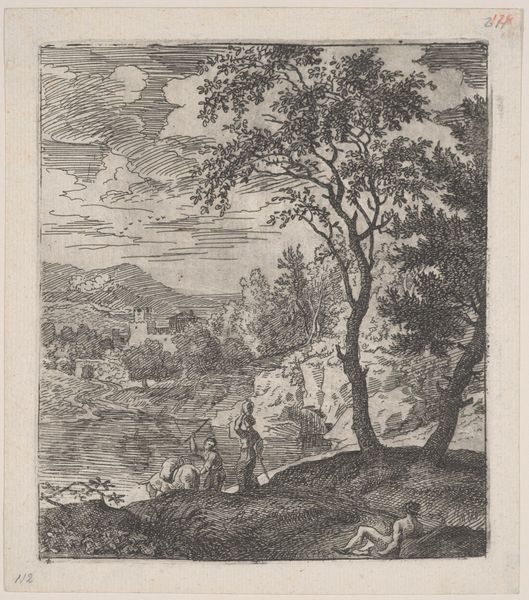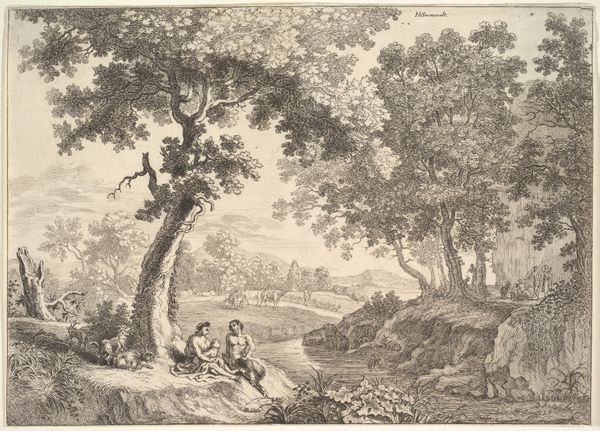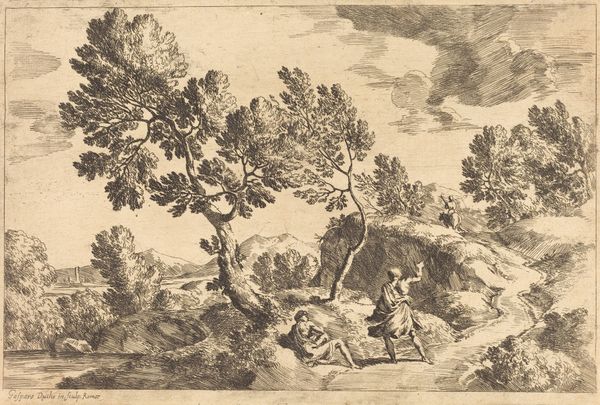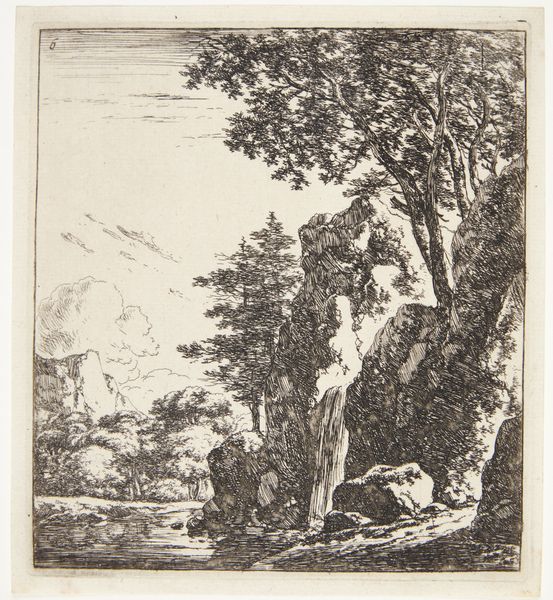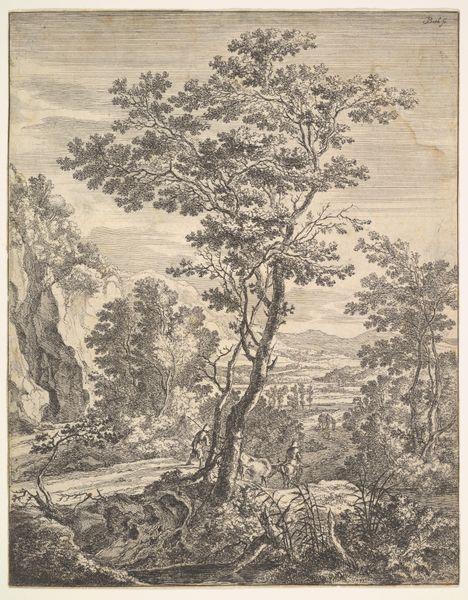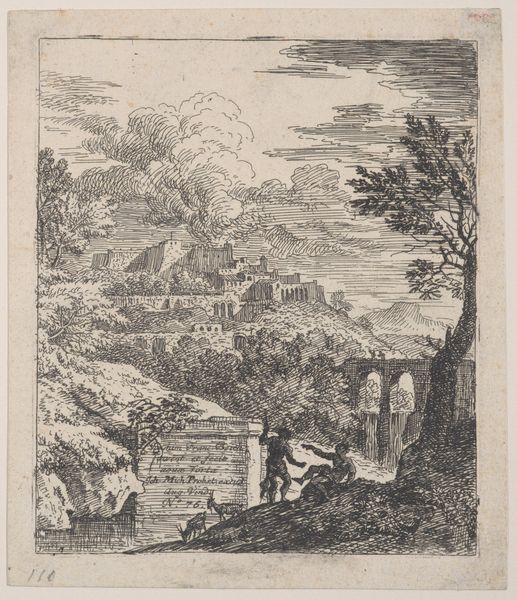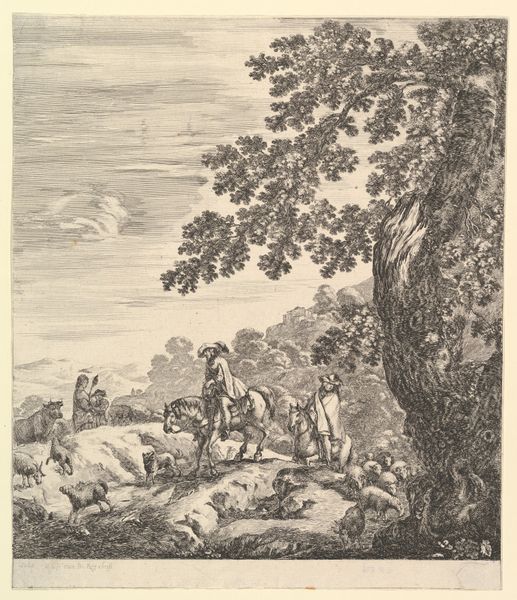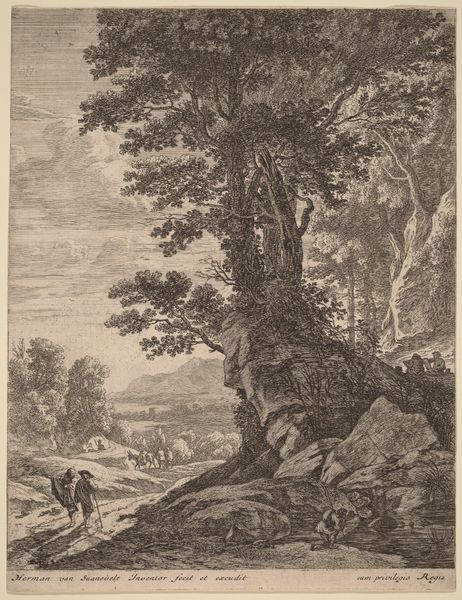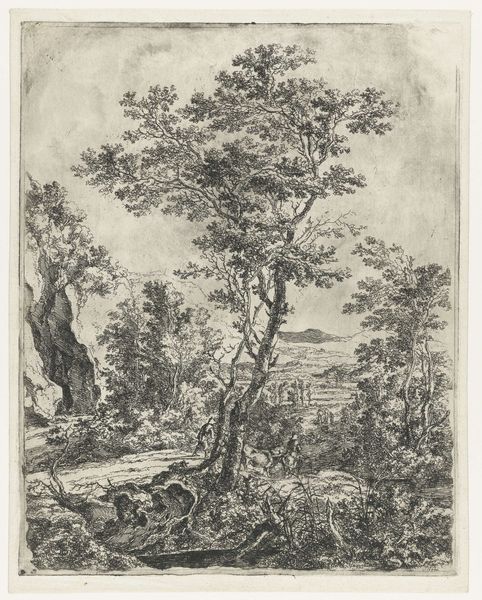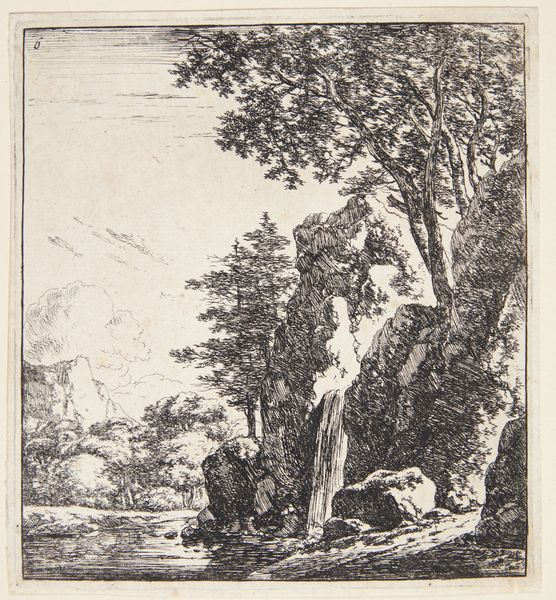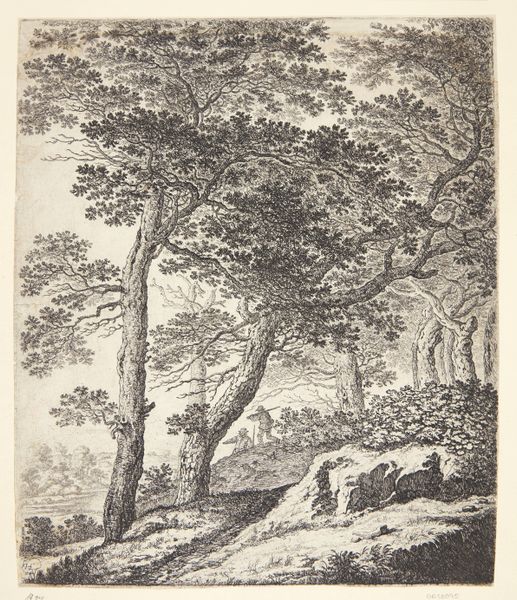
Plate 3: a shepherd seated on a hill, a cow and two sheep at left, and a town in right background, from 'Landscapes in the manner of Gaspar Dughet' 1695 - 1730
0:00
0:00
drawing, print, etching
#
drawing
#
baroque
# print
#
etching
#
landscape
Dimensions: Plate: 6 7/8 × 5 15/16 in. (17.5 × 15.1 cm) Sheet: 7 9/16 × 6 5/8 in. (19.2 × 16.8 cm)
Copyright: Public Domain
Curator: This is "Plate 3: a shepherd seated on a hill…" part of Franz Joachim Beich's series "Landscapes in the manner of Gaspar Dughet," created between 1695 and 1730. The etching captures a pastoral scene with detailed cross-hatching. Editor: It feels timeless, almost melancholic. The texture is incredible for an etching. The way light plays across the foliage and the figure of the shepherd really draws you in. It seems very focused on an idealized past. Curator: Yes, these landscapes engage with notions of the Arcadian ideal, drawing heavily on the tradition of representing rural life as simpler, perhaps even morally superior. There’s a powerful gendered element at work here: Who gets to own the land and determine the representation of labor in these spaces, and who is erased? Editor: You're right. The labour is softened, idealized. There's no real sweat. More interesting to me is the technique – the tangible labour that went into producing the plate itself. The precision needed to create those textures. I also see this in a lineage with other forms of craft in Bavaria at this time, such as weaving and toymaking. Curator: These works circulated widely; this particular print is at the Metropolitan Museum of Art in New York. Consider its historical consumption: these images were made at a time of significant political and social stratification and a shifting awareness of nationhood. Prints like this may have served as propaganda for elite leisure activities, offering an escape, real or imagined, from burgeoning capitalist relations. Editor: Or, it could have been simply hung to demonstrate good taste. How do people at this time consume artworks depicting nature? Curator: Well, within the framework of elite visual and material cultures, it likely performed both. These were aesthetic and political statements, inextricably linked. I suppose I can appreciate the artistry, but I feel compelled to historicize what is deliberately omitted here – particularly labor – from the idylls created and consumed. Editor: It strikes me, still, as so meticulously rendered. Thinking about the etching process, the time involved, I see dedication to a specific aesthetic—a controlled manipulation of material. The way the materials allow for a softness that still offers great detail fascinates me. Curator: Ultimately, the success of Beich's plate lies in its complex layers – formal, historical, and deeply implicated in its social context. Editor: Agreed, a tiny scene, yet it reveals the immense pressures shaping our concept of nature itself.
Comments
No comments
Be the first to comment and join the conversation on the ultimate creative platform.
